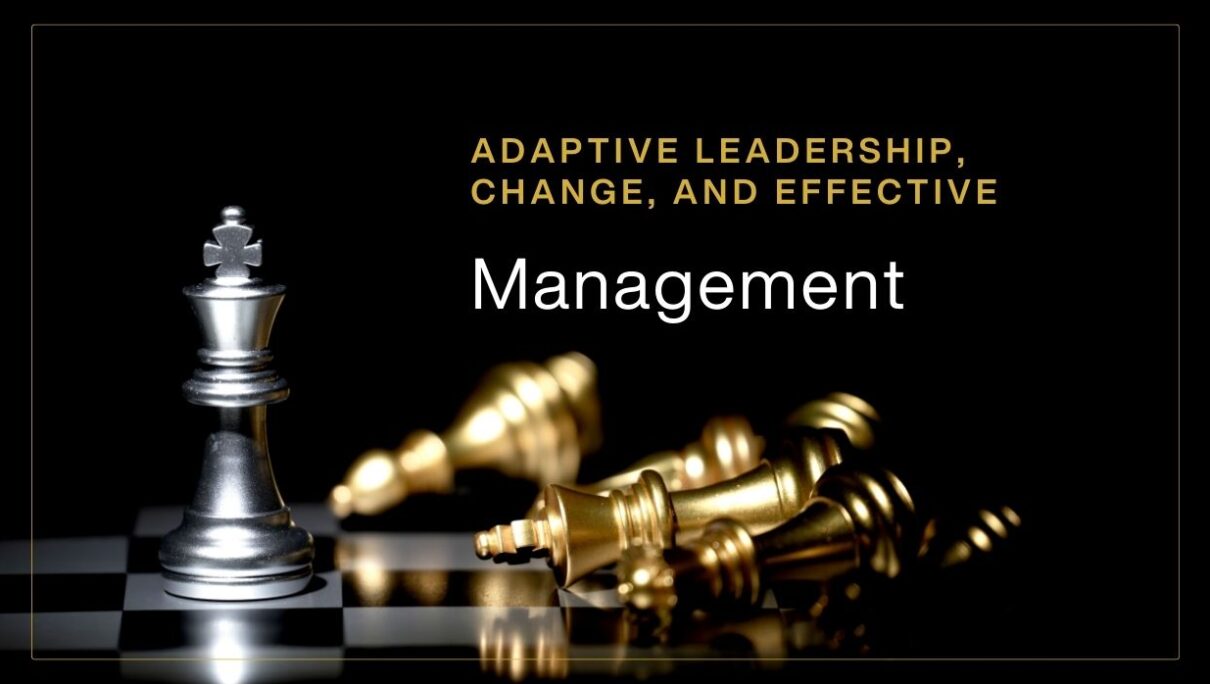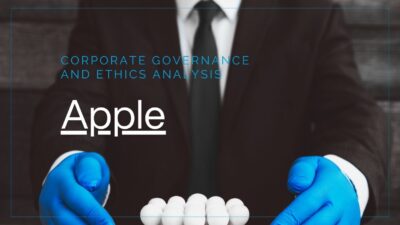Table contents
Introduction
- 1.1. Definition of Leadership
- 1.2. Overview of Traditional Leadership Theories
- 1.3. Assignment Aims and Objectives
Problem Identification
- 2.1. Nature and Manifestations of Resistance
- 2.2. Strategies for Managing Resistance
Critical Discussion
- 3.1. Importance of Scholarly Literature
- 3.2. Theoretical Frameworks and Empirical Studies
- 3.3. The Effective of Approaches to Managing Resistance
Application of Theory
- 4.1. Application of Adaptive Leadership to Change Management Scenarios
- 4.2. Strategies Informed by Organisational Behaviour Theories
- 4.3. Practical Example of Adaptive Leadership in Action
Recommendations and Conclusion
- 5.1. Key Points
- 5.2. Implications for Organisational Success
References
Introduction
Definition of Leadership
Leadership can be defined as the capacity to transcend the limitations of one’s own culture or environment and initiate evolutionary changes that are better suited to adaptability. It involves recognising the constraints of one’s own environmental context and fostering adaptive evolution within that environment. (Schein, 2004). In the dynamic landscape of contemporary business, organisations face a continuing need to navigate through complex challenges and business uncertainties. Whether aiming to effectively manage a current business environment or facilitate strategic change, leaders of organisations traditionally employ numerous leadership theories to achieve their objectives.
Overview of Traditional Leadership Theories
The various leadership theories including, Great Man Theory, Control and Domination, Situational Leadership, Transactional, and Transformational Leadership, serve as valuable frameworks to gather insight into understanding the different leadership styles, their use cases, and their effectiveness. For instance, when distinguishing between transactional and transformational leadership, James McGregor Burns highlights the difference between managing through rewards and punishments and inspiring through vision and empowerment, respectively, in that, transactional leaders incentivise their constituents’ self-interests through contingent reinforcement, offering positive reinforcement such as constructive rewards, praise, and acknowledgement for successfully meeting targets and objects set by the leader and/or the organisation. (Bass, 2000).
Currently, business environments are witnessing rapid technological advancements, globalisation, and market disruptions, underscoring the importance of adopting adaptive leadership strategies. The principles of adaptive management, as articulated by Holling (1978), encompass connecting management practices with the hypothesis-driven scientific method and encourage increased stakeholder involvement. In brief, this approach serves as a mechanism for learning, whereby management actions are continually iterated by initiating, monitoring, analysing, and adjusting based on the gathered data (Dreiss et al., 2017). Moreover, at the heart of these strategies lies the nuanced understanding of employee dynamics and the management of resistance to change.
Aims and Objectives
By examining adaptive leadership, change management, and effective management practices within the context of modern business environments and resistance to change, this essay aims to gain a deeper understanding of the challenges and opportunities inherent in leading and managing organisational change.
Problem Identification
In the context of organisational dynamics, resistance to change is a phenomenon that manifests when an individual or a group of individuals within an organisation express reluctancy towards proposed changes in policies, procedures, or business structures. Under this premise, resistance to change can be defined as a state of mind reflecting unwillingness or unreceptiveness to change in the ways people think or behave (Hultman, 2003). Understanding the manifestations of such instances of resistance is essential for business leaders and managers to effectively navigate through periods of change.
Nature and Manifestations of Resistance
It is important to understand that resistance to change should be anticipated during times of change, whilst recognising that resistance can stem from a multitude of factors. These manifestations can arise for various reason, including individuals potentially fearing change due to lack of understanding, distrust stemming from past encounters, inadequate communication, lack of motivation and commitment, internal conflicts due to weak organisational structures, and inefficiency in sharing best practices and fostering learning (Thompson, Martin and Scott, 2023). Through identifying the rudimentary reasons for why resistance to change may occur, business leaders can tailor their approaches to pre-emptively address the concerns of their employees, alleviate unforeseen anxieties, and garner support from key stakeholders. Moreover, understanding the dynamics of resistance enables leaders to anticipate potential challenges, mitigate risks ahead of time, and proactively manage resistance throughout the change process.
Strategies for Managing Resistance
Kotter and Schlesinger (1979) identified six ways of overcoming resistance to change through the strategical implementation of a multifaceted approach, encompassing education, participation, facilitation, negotiation, manipulation, and coercion, each presenting distinct challenges and considerations (Thompson, Martin and Scott, 2023). These are:
- Education and Communication: Providing education and communication should aim to elucidate the rationale and necessity for change. However, challenges may arise due to inherent time delays and logistical complexities when engaging numerous individuals. Additionally, fostering mutual trust is imperative.
- Participation and Involvement: Encouraging participation and involvement posits that individuals will be more inclined to support changes if they actively contribute to their formulation and design. Nonetheless, this approach can be time-consuming, and deliberative group decisions may lead to compromises, potentially resulting in suboptimal outcomes.
- Facilitation and Support: Facilitation and support strategies may involve training or counselling; however, there is no assurance that they will effectively overcome resistance.
- Negotiation and Agreement: Negotiation and agreement processes often rely on incentives and rewards, especially when resistance stems from perceived losses. While useful, particularly when facing formidable resistance, offering rewards for desired behavioural changes on every occasion may prove impractical.
- Manipulation and Co-optation: Manipulation and co-optation involve clandestine efforts to influence individuals, such as selectively disseminating information or orchestrating events. Co-optation entails incentivizing informal leaders through personal rewards or status elevation. Both methods raise ethical concerns and could lead to harboured grievances.
- Explicit and Implicit Coercion: Resorting to threats may yield short-term compliance but is unlikely to foster long-term commitment (Kotter and Schlesinger, 2008).
Critical Discussion
Important of Scholarly Literature
Literature on resistance to change provides valuable insights into the complexities of managing organisational change. Studies have explored the underlying causes of resistance, ranging from individual psychological factors to organisational culture and structural impediments (Errida and Lotfi, 2021). By combining the findings from diverse fields of enquiry offering various perspectives, including psychology, sociology, and management studies, researchers within their respective fields have contributed to a nuanced understanding of the dynamics of resistance and its implications for organisational effectiveness.
Theoretical Frameworks and Empirical Studies
Theoretical frameworks such as Lewin’s Change Management Model and Kotter’s 8-Step Process for Leading Change, and Jick and Kanter’s Method of Change offer valuable frameworks for conceptualising and addressing resistance to change (Al-Haddad and Kotnour, 2015). For instance, Kanter introduced a framework known as “the change wheel model,” which integrates ten key elements that are necessary for achieving successful change: (1) establishing a common theme and shared vision, (2) implementing rewards and recognition, (3) setting measurable milestones and providing feedback, (4) providing guidance, establishing management structures, and refining processes, (5) fostering effective communication and sharing best practices, (6) attaining quick wins, (7) mobilising champions and sponsors, (8) facilitating training, (9) determining the approach to change, and (10) utilizing symbols and signals. (Errida and Lotfi, 2021). The combination of theoretical insights with empirical evidence has allowed scholars to shed light on the various factors that contribute to successful change implementation as well as the barriers that hinder progress.
The Effectiveness of Approaches to Managing Resistance
Despite the large volume of research on resistance to change, there is no uniformed solution for managing resistance effectively. The employment of different approaches may yield varying results depending on factors such as organisational culture, leadership style, the type of change itself, or the tools used to investigate and subsequently initiate the change process.
A notable example is a study conducted by Dreiss et al., (2017), which investigated the effectiveness of adaptive management in natural resource management as they found a lack of evidence when comparing adaptive management to traditional techniques, noting at the time that existing literature mainly focused on employees of US federal organisations. By using a questionnaire to gather data on factors influencing effective management, with a focus on adaptive management strategies, their study addressed the gap within existing literature, gathering insights from a broader range of disciplines and professional backgrounds. The results of the study suggest that the characteristics which contribute to effective management align closely with the principals of adaptive management. Though, perceptions varied between scholars and practitioners, highlighting the importance of long-term approaches and stakeholder involvement.
Application of Theory
Application of Adaptive Leadership Theory to Change Management Scenarios
The premise of adaptive leadership in managing change substantiates that leaders should assess, mitigate, allocate, and create environments encouraging of navigating individuals towards embracing the change, transitioning from one state to a new state whilst minimising loss. As articulated by (Heifetz, Linsky and Grashow, 2009), what people resist is not the change per se, but loss. When change involves real or potential loss, people hold on to what they have a resist change. Therefore, a crucial aspect of adaptive leadership involves the ability to identify the various types of losses individuals may experience during periods of change, ranging from personal relationships and material possessions to professional status and sense of belonging.
In the context of businesses adapting to the emergence of new technology such as AI and automation, adaptive leadership theory offers valuable insights into how leaders can navigate through uncertainty, complexity, and resistance, that inadvertently arises from the result of accelerated social change (Teker and Koc, 2019). To manage this change with the least amount of resistance, leaders should exhibit agility and flexibility when devising strategies to integrate new technologies into their business operations effectively.
Strategies Informed by Organizational Behaviour Theories
Theories of organisational behaviour provide a framework for understanding the underlying dynamics of resistance to change and devising strategies to overcome it. By drawing on insights derived from disciplines such as psychology, sociology, and anthropology, leaders can identify the root causes of resistance manifestations and accordingly adapt their leadership approaches.
For example, Perceived Organizational Support (POS) to the perceptions of employees about their employers in terms of how their organisation values their efforts, welfare, social needs, and career development. It is rooted in social exchange theory, which suggests a mutual relationship between employees and their organisation. When employees perceive they are supported by their organisation, they are more likely to be open to change initiatives (Rehman et al., 2021). Moreover, a positive perception of organisational support can create a sense of trust and loyalty among employees, making them more willing to adapt to new ways of working, such as a willingness to integrate artificial intelligence into their working life.
Conversely, the opposite is also true. If employees do not perceive that their organisation has their best interests in mind, they may be less likely to engage in change initiatives, which will result in a hindered change process.
Practical Example of Adaptive Leadership
One example of adaptive leadership in the context of technological change is the integration of AI in the recruitment process of Cielo, a leading strategic outsourcing recruitment organisation. The project was introduced to team leaders as a pilot project that was “cutting edge and something new,” wherein which their feedback was incorporated into the technological design of the AI software. The team leader’s early involvement is believed to have positively influenced the practical design and functionality of the system, potentially fostering acceptance among other team members (Niehueser and Boak, 2020).
As a result, the feedback data that emerged from follow-up interviews and questionnaires, suggested that adoption willingness was increased by an increase in efficiency, demonstratable performance and quality of the technology, and ease of use of the technology.
Conclusion
In conclusion, the discourse on adaptive leadership and change management underscores the importance of adaptive leadership when navigating the complexities of modern business environments during change initiatives. Leadership, as defined by Schein (2004), transcends cultural limitations to initiate changes beneficial to adaptability, requiring leaders to have an awareness of circumstantial constraints. Traditional leadership theories, such as the Great Man Theory, Situational Leadership, and Transactional and Transformational Leadership, provide valuable frameworks for understanding different leadership styles and their effectiveness. However, during time of accelerated technological advancements, the application of adaptive leadership becomes imperative for a business environment to thrive successfully.
Key Points
Adaptive leadership, rooted in principles articulated by Holling (1978), emphasises connecting management practices with scientific methods, whilst maintaining close stakeholder involvement. This approach fosters a sense of continuous learning, crucial for managing change and effectively addressing resistance. Resistance to change, which is a common manifestation during change initiatives, stems from various factors, including fear of the unknown, distrust, communication inefficiencies, and structural weaknesses. Kotter and Schlesinger (1979) outlined six strategies for managing resistance, including education, participation, facilitation, negotiation, manipulation, and coercion, each with their own challenges and requiring their own considerations.
The literature surrounding resistance to change offers insights into the multifaceted nature of change itself, drawing on insights from within the fields of psychology and management studies. Theoretical frameworks such as Lewin’s Change Management Model and Kotter’s 8-Step Process provide valuable guidance for addressing resistance.
Implications of Organisational Success
Adaptive leadership theory helps to better prepare for change management scenarios by highlighting the importance of identifying and addressing potential individuals’ losses during organisational change processes. Leaders must exhibit agility and flexibility in integrating new technologies, such as AI and automation, into business operations. Theories of organisational behaviour, such as Perceived Organizational Support (POS), offer insights into fostering employee trust and loyalty, which is essential for successful change initiatives. While practical examples, such as Cielo’s integration of AI in recruitment processes, demonstrate the efficacy of adaptive leadership in driving change, noting that early involvement by team leaders facilitated wider organisational acceptance and adoption.
In sum, adaptive leadership is essential for addressing resistance to change during times of business transformation. By embracing adaptive strategies, leaders can foster a culture of innovation, resilience, and continuous improvement, essential for organizational success in today’s dynamic landscape.
[Word Count: 2185]
References
Al-Haddad, S. and Kotnour, T. (2015) ‘Integrating the organizational change literature: a model for successful change’, Journal of Organizational Change Management, 28(2), pp. 234–262.
doi: 10.1108/JOCM-11-2013-0215.
Bass, B.M. (2000) ‘The Future of Leadership in Learning Organizations’, Journal of Leadership Studies, 7(3), pp. 18–40.
doi: 10.1177/107179190000700302.
Dreiss, L. et al. (2017) ‘Adaptive Management as an Effective Strategy: Interdisciplinary Perceptions for Natural Resources Management’, Environmental Management, 59, pp. 218–229.
doi: 10.1007/s00267-016-0785-0.
Errida, A. and Lotfi, B. (2021) ‘The determinants of organizational change management success: Literature review and case study’, International Journal of Engineering Business Management, 13, p. 184797902110162.
doi: 10.1177/18479790211016273.
Heifetz, R.A., Linsky, M. and Grashow, A. (2009) The Practice of Adaptive Leadership: Tools and Tactics for Changing Your Organization and the World. Harvard Business Review Press.
Hultman, K. (2003) ‘Resistance to Change, Managing’, Encyclopedia of Information Systems, 3, pp. 693–705.
doi: 10.1016/B0-12-227240-4/00149-0.
Kotter, J. and Schlesinger, L. (2008) ‘Choosing Strategies for Change’, Harvard business review, 57, pp. 106–114.
doi: 10.1007/978-1-349-20317-8_21.
Niehueser, W. and Boak, G. (2020) ‘Introducing artificial intelligence into a human resources function’, Industrial and Commercial Training, 52(2), pp. 121–130.
doi: 10.1108/ICT-10-2019-0097.
Rehman, N. et al. (2021) ‘The Psychology of Resistance to Change: The Antidotal Effect of Organizational Justice, Support and Leader-Member Exchange’, Frontiers in Psychology, 12.
doi: 10.3389/fpsyg.2021.678952.
Schein, E.H. (2004) Organizational Culture and Leadership, Third Edition. Jossey-Bass (BusinessPro collection).
Teker, S. and Koc, T. (2019) ‘Industrial Revolutions and its effects on quality of life’, Pressacademia, 9, pp. 304–311.
doi: 10.17261/Pressacademia.2019.1109.
Thompson, J.L., Martin, F. and Scott, J.M. (2023) Strategic Management Awareness and Change. Cengage Learning




